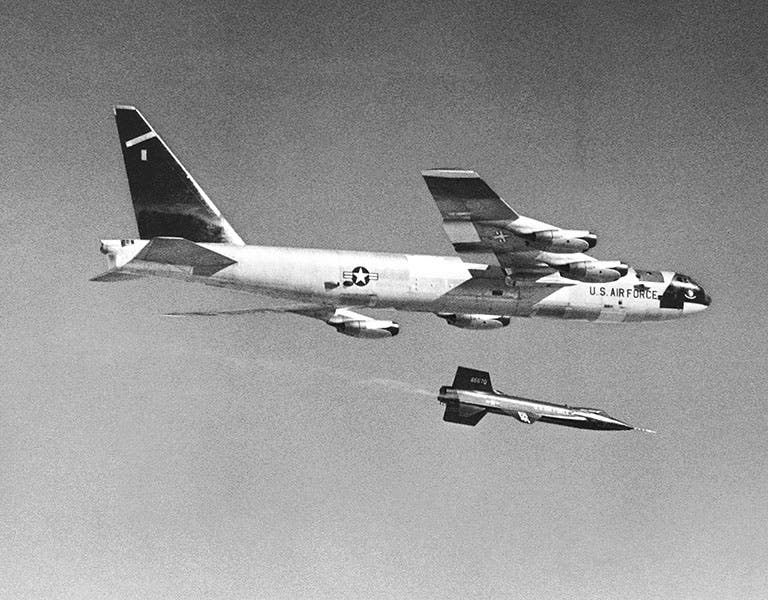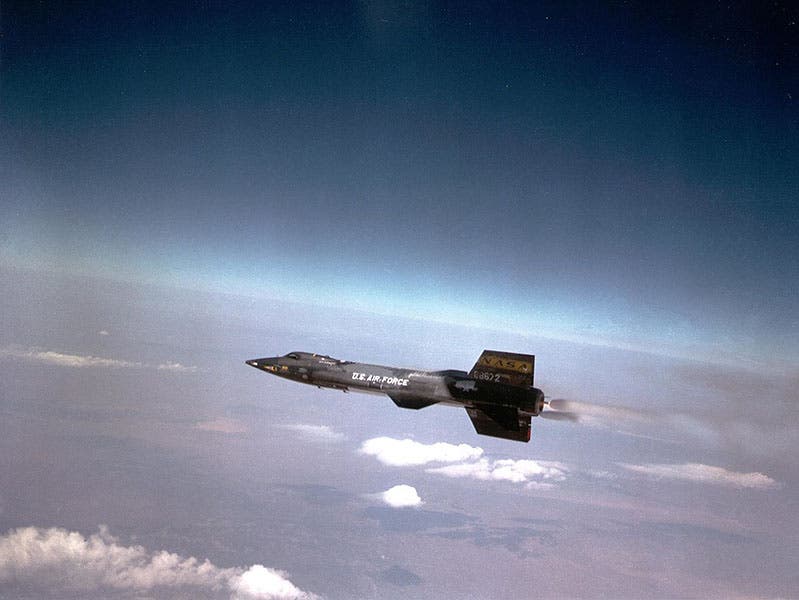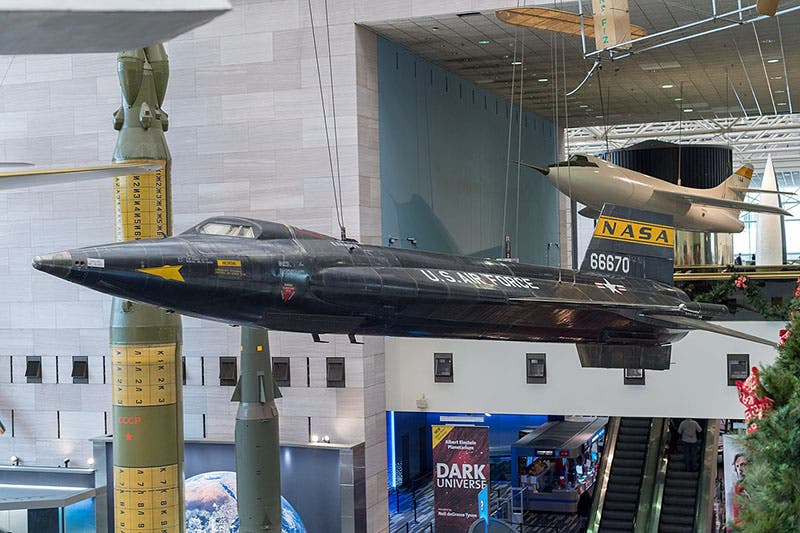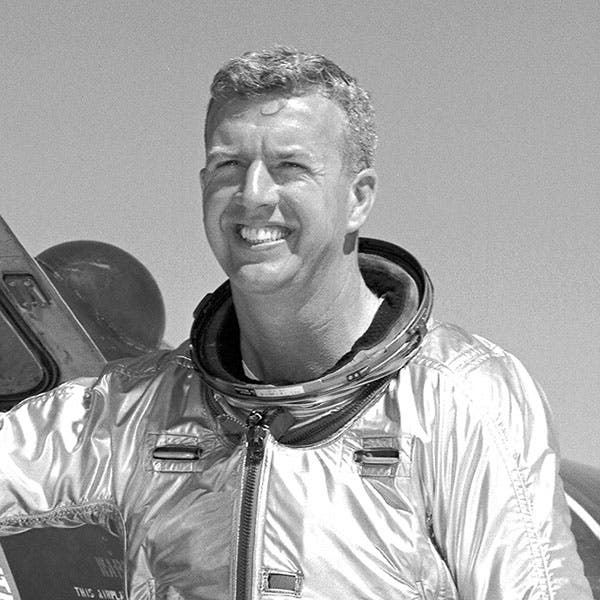Scientist of the Day - Joe Walker
Joseph Albert Walker, an American test pilot, was born Feb. 20, 1921. Always referred to as Joe, Walker was the astronaut that no one knows. Fifty years ago, everyone knew Alan Shepard and John Glenn and Gus Grissom – they were more popular than film idols (and they actually gave rise to film idols, as the movie The Right Stuff (1983) gave quite a boost to the careers of Ed Harris (Glenn), Scott Glenn (Shepard), Fred Ward (Grissom), and Dennis Quaid (Gordo Cooper). In the film, there were only two old-school test pilots, Chuck Yeager (played by Sam Shepard) and Scott Crossfield (Scott Wilson), but neither was ever an astronaut. Astronaut status, by international agreement, is conferred only on someone who takes a powered aircraft or spacecraft into space, beyond an altitude of 100 kilometers – about 62 miles (the U.S. Air Force has a more relaxed standard, 50 miles, but we will adhere to the international standard here). Joe Walker did this twice, passing the 100-kilometer barrier in a rocket-powered plane known as the X-15.
Walker is often referred to as a test pilot and physicist, which is not really accurate, for while he did major in physics at college, that was it for his scientific higher education. He graduated in 1942 and immediately entered the Army Air Corps, where he went through flight training and spent the war flying photo reconnaissance missions in the wonderful double-fuselage Lockheed P-38. After the War, he left the military and signed on with NACA (the National Advisory Committee for Aeronautics, the precursor to NASA), for whom he soon became a test pilot. He moved in 1951 to Edwards Air Force Base in California, where most of the experimental aircraft testing was done (and where the storyline of The Right Stuff begins). When NACA became NASA in 1958, Walker continued on as a NASA civilian test pilot.
NACA’s first experimental aircraft was the Bell X-1, a stubby thing looking something like a canary. But it could fly, and Yeager flew the X-1 right through the sound barrier (Mach 1) in 1947. Walker flew the X-1 a few times, and then the infamous (nearly unflyable) X-3, and he had scores of flights in the X-5. But he is usually associated with the North American X-15, launched 15 years after the X-1, in 1959. It was a rocket-plane like the X-1, but it was a much more powerful and sophisticated bird. The X-1 had been launched by being dropped from a B-29 Superfortress; the X-15 was launched from a B-52 Stratofortress, which could fly much higher and faster and give the X-15 a head-start on a high-altitude mission (second image).
There were three X-15s, and Walker was one of a dozen X-15 pilots, but on this day, July 19, 1963, he did something no one had ever done in an aircraft – he rode it into space, passing the 100-kilometer barrier to reach 108 km (67 miles). Five weeks later, he piloted the same aircraft to 108 km, thus going into space for a second time. Those are amazing altitudes for an aircraft; can you imagine cruising along in a Boeing 747 at 30,000 feet when the pilot says, over the intercom, “We are encountering turbulence, so we are going to take her up to 328,000 feet.” That is 100 kilometers. It is not where planes are meant to fly, or can fly, unless they are wrapped around a rocket. Because of its contributions to both aircraft development and the space program, there is an X-15 hanging in the Air and Space Museum in Washington, D.C. (fourth image). That is an X-1 in the background.
Walker also set the air-speed record for an aircraft, taking the X-15 to a velocity of 4,100 mph in 1962 (the record was raised to 4,500 mph in 1967, but still in an X-15, and I believe that record still stands). But Walker's days, like those of many test-pilots who live on the edge, were numbered. In 1966, he was flying an F-104 in tight formation with an XB-70 bomber as a part of a demonstration, when his plane contacted the bomber, flipped over, and exploded, killing Walker instantly. He was 45 years old. He was not given his astronaut wings until 2005, almost 40 years after his death. He looks like quite a dashing fellow, as we can see in the photographs, and why he was not included in The Right Stuff, I cannot figure out. Shame on you, Tom Wolfe, for unwittingly contributing to the conspiracy to keep Joe Walker – astronaut – hidden from public view.
William B. Ashworth, Jr., Consultant for the History of Science, Linda Hall Library and Associate Professor emeritus, Department of History, University of Missouri-Kansas City. Comments or corrections are welcome; please direct to ashworthw@umkc.edu.











